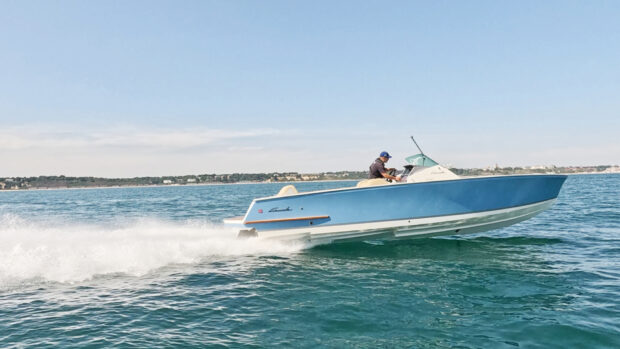Entering a harbour at night is a very different challenge to entering during the day. If you haven’t carefully considered what you are looking for and when, it can be very confusing or even dangerous. Our resident boating instructor Jon Mendez shares his top tips...
In addition to your normal safety equipment, the key points to think about before attempting a night entry are to check that your navigation lights are working, keep a small head torch close to hand for seeing what you are doing on the boat and a red light for chart checks that won’t ruin your night vision – I like having two separate torches so you don’t blind yourself with the wrong switch.
Lastly, get a decent handheld spotlight in case you need to illuminate something or someone afloat. The next step is to plan your approach so that you and your crew have a clear idea of what should happen when so they can play a crucial role as lookouts.
The boat we used did not have a radar, which can be a real aid at night, especially on a bigger boat, but it’s perfectly possible to manage without. In fact, while a night entry can be daunting at first, personally I find it far simpler, as each individual buoy is lit with its own distinctive colour and pattern, making it much easier to identify than during the daytime, when they all look much the same – either red, green or cardinals.
Here in Poole we have a huge harbour but that presents its own challenges as once through the main harbour entrance there are three possible channels with so many lights that you need to know exactly what you are looking for and how to identify it.
The area is covered by IALA ‘A’, which means the buoyage is identifiable by three key features: the colour and combination of colours on the buoy itself; the shape of their topmark; and, for night passages, the colour and flashing sequence of the light.
Article continues below…

How to use pilotage skills to enter any harbour without a chartplotter

How to: Set up a boat radar system properly
Starboard-hand markers all flash green, port-hand markers red and cardinal marks white but the colour, flashing sequence and timing are all marked on the chart beneath each buoy. So, for example, the first starboard buoy in the channel leading to the harbour entrance is Bar Buoy No1.
On the chart this has Q.G marked beneath it, meaning a Quick Green light every other second. The next is Fl.G.3s (Flash of Green every 3 seconds) and the one after that is Fl.G.5s (Flash of Green every 5 seconds).
There are corresponding red marks on the port side of the channel. In reality, this information is much easier to see and absorb from either a paper chart or the relevant page in the almanac, rather than from an electronic chartplotter – as you normally have to hover over each buoy with the cursor to see the light’s characteristics.
Just before the entrance itself, is a West Cardinal Q(9)15s ,which means 9 quick white flashes every 15 seconds. Immediately after that is a second West Cardinal again Q(9)15s, so you need to be certain which is which.
From here there are three choices: west towards the smaller Islands or north-eastwards to choose either the Main Ship Channel, or the smaller North Channel. The marks for both are remarkably close together and some have the same timings for their lights, so it’s crucial to spot the correct channel as in between are sandbanks that dry at low tide.
Once you have chosen your channel the new challenge is to spot your marks against the myriad lights of Poole town and the quay behind. Once at your intended marina, organise lines and fenders, then try to bring your boat alongside and secure your lines from the safety of the cockpit before stepping ashore as it’s easy to misjudge distances in the dark.










